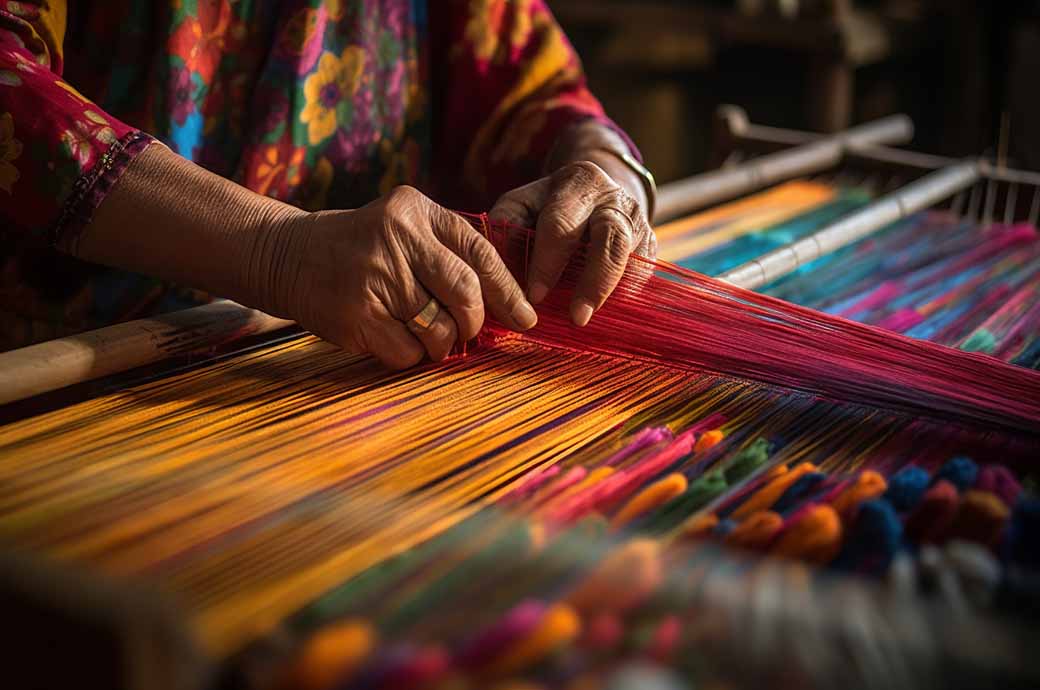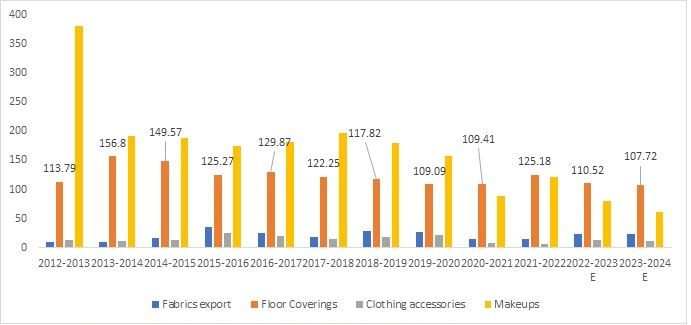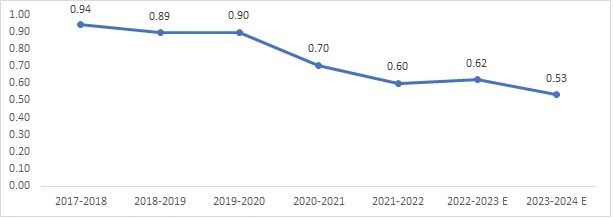
In an era dominated by fast fashion, India's rich and vibrant textile heritage faces a significant threat of decline. The intricate designs and vibrant colours that embody India's cultural identity are at risk, overshadowed by the global trend towards mass-produced garments. As European countries lose their textile prominence, India's traditional textiles—particularly handlooms and silk products—remain critical to its cultural and economic landscape. Despite having dedicated ministries, there's a notable gap in effectively promoting these traditional sectors.
India's textile sector, a blend of tradition and innovation, holds immense potential. It's not just an economic asset but a cultural treasure, representing India’s diverse and rich history. The global market's appetite for uniqueness and authenticity offers India a unique opportunity to position itself as a cultural ambassador, leveraging its heritage for global influence and economic gain. However, this requires a strategic approach that intertwines traditional craftsmanship with modern marketing techniques.
The challenges are manifold, including competition from mass-produced textiles and the gradual erosion of traditional skills. Yet, the rewards are significant. By preserving and promoting its textile heritage, India stands to gain economically and enhance its global cultural footprint. This endeavour calls for a concerted effort from the government, cultural institutions, and the fashion industry to celebrate and sustain India's textile legacy. As the world becomes increasingly homogenised, India’s rich tapestry of textiles could offer a beacon of cultural richness and diversity, not just for India but for the global community.
Is the future of Indian tradition in the shadow of uncertainty?
Handloom, one of the oldest traditional textile industries in India, remains one of the largest cottage-based industries. As the most sustainable method of apparel production, it is yet under-celebrated globally. In India, the handloom sector employs around 35 lakh people, 79 per cent of whom are women. However, exports mainly comprise home textile products rather than apparel or sarees. Classified under discretionary consumption, the traditional handloom sector's global exports have significantly declined due to major economies slowing down, posing a high threat to employment.
 Source: Handloom Export Promotion Council, India (HEPC India)
Source: Handloom Export Promotion Council, India (HEPC India)
Denied share of the pie
The Indian handloom industry, already grappling with fierce competition, especially in terms of cost, struggles in the fast fashion world where its products are deemed too expensive. This holds true for both domestic and international markets. The exports for fabrics are sluggish with the sarees suffering the most in the domestic market. The import of China-made sarees with cheaper fibres is making inroads in the domestic market, thus having the potential to totally paralyse the largest cottage industry in the country. The challenge stems not only from these domestic imports but also from international market pressures.
Additionally, power looms within India receive increasing policy support, overshadowing handloom products. A key issue is the cost: power loom-produced fabrics and textiles are markedly cheaper than those from handlooms, diminishing the latter's competitiveness nationally. In the overall Textile and Apparel exports, handloom contributions fail to surpass even 1 per cent.

Source: Ministry of textiles and HEPC
In handlooms, India remains a specialist in producing handmade quality carpets and floor coverings. However, their export figures are not particularly impressive. As of 2023, these carpets, a stronghold in India's textile sector, contribute to a mere 0.03 per cent of India's total exports. India falls behind significantly in promoting its handloom products. As a result, countries like China and Turkiye, which lead with machine-produced carpets, are dominating the international market. The primary avenues for substantial export earnings are through exhibitions and special events. Consequently, much is expected from the Handloom Export Promotion Council (HEPC) to steer the handloom industry towards a more export-oriented approach.
Simple economics of production
It is widely acknowledged that a country should capitalise on its specific natural endowments1 to boost exports and economic growth. India possesses both natural and labour endowments, which, if properly utilised, can lead to significant advantages in production and competitive edge. The country boasts a vast repository of generational textile knowledge but faces a considerable setback: the sector has not undergone technological modernisation. Investment in the industry is primarily confined to supply costs, and the sector's visibility remains low.
Consequently, the country overlooks a basic yet environmentally friendly production method that has been passed down through generations. Encouraging innovation within the handloom sector, coupled with the development of a proper supply chain, could enhance the industry's visibility. This approach would also stimulate innovation and boost employment. To increase efficiency, the handloom industry should shift towards contract-based trade. Merely promoting and selling products at international exhibitions will not suffice for the industry's growth.
Intellectual property rights: The real game changer?
India has 65 products registered under Geographical Indications as intellectual property, yet they suffer from inadequate marketing, leading to underpromotion and low visibility. Additionally, the handloom sector faces the challenge of its products being indiscriminately categorised with handicrafts. The absence of a distinct classification for handloom-produced items raises concerns about their international categorisation. This lack of clarity results in ambiguity and diminished exposure for handloom products. There is a pressing need for a proper identification system both nationally and internationally for handloom products, to ensure they receive appropriate recognition.
Taking the next step
In terms of sustainability, handlooms could provide an all-round solution for India's textile industry, an age-old tradition within the country. However, the prevailing lack of awareness about policies to support the handloom sector is leading to the closure of many traditional businesses. This situation threatens India's rich textile tradition, historically known for producing high-quality textiles. As a result, the nation is losing its market share not just domestically, but also internationally. This shift impacts the local economy and simultaneously enables China to increase its market share in the long run.
Notes:
1Endowments: The resources – Natural, Labour that the country can make best use of to ensure it gets an advantage in trade globally.
Fibre2Fashion News Desk (MI WE)